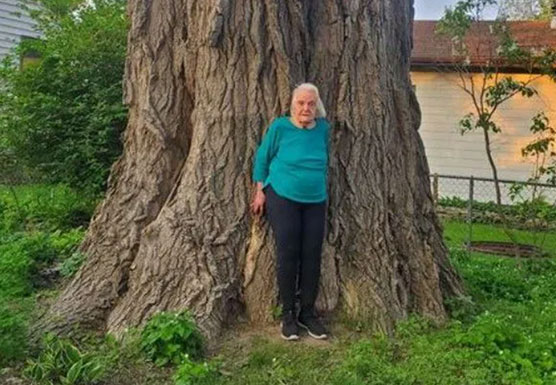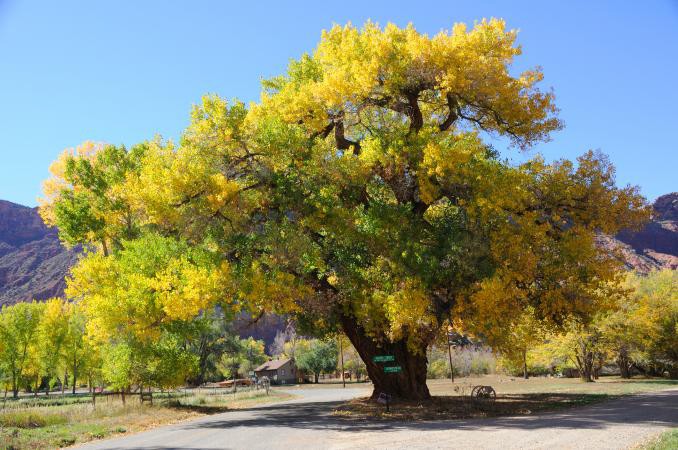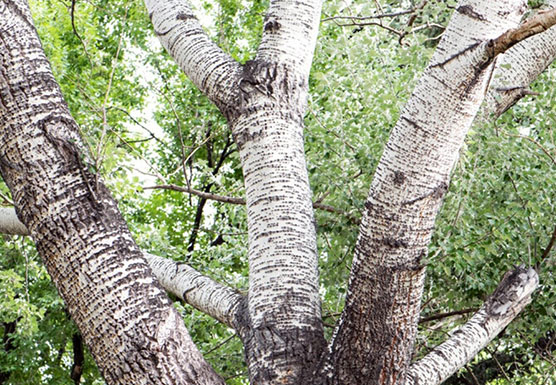Poplars, Cottonwoods, and Aspens are all members of the Populus genus, with many characteristics that make them desirable in homeowners’ yards. These attractive trees have triangular leaves with long stems and silvery backsides that shimmer or quake in the wind. Moreover, Cottonwoods and Poplars grow fast, so their ability to produce shade quickly is why homeowners planted the trees extensively in the 1960s and 1970s around Denver and its suburbs. However, 50 years later, many of these characteristics make these trees problematic. Silver Poplars grow in 43 states and are considered weedy or invasive. These fast-growing softwood trees are prone to disease and mechanical breakage. For these reasons, large Cottonwoods and Silver Poplars growing in small yards or near garages, sheds, or homes are considered dangerous and need removal.
Silver Popular and Cotton Tree Care Issue One – Late-Spring Frosts
Old age is not the only reason Cottonwoods and Poplar trees die. By the end of May, trees are leafing out and in full bloom, and like any tree, a late-spring hard frost can damage Cottonwoods and Poplars. By the end of May, trees are leafing out and in full bloom. The trees’ vascular system is vulnerable to hard freezes, which can shock trees back to hibernation. If a frost in May hits your trees, water them and keep your fingers crossed. The trees will survive if they re-bloom in July and all deadwood needs to be pruned out. If the trees does not leave out, most likely the frost killed them and the trees need removal.
Silver Popular and Cotton Tree Care Issue Two – Silver Poplar Tree Diseases
A common Cottonwood and Poplar tree disease is Cytospora Canker. The fungus attacks weakened trees affected by drought, late-spring frosts, insect and fungi defoliation, or trunk and root injury. The fungus spreads across the living bark and wood of the tree. If not treated, the tree dies from girdling. The appearance of oozing cankers is a sign that a tree has Cytospora.
Since Cytospora Canker thrives on stressed and weakened trees, the best prevention approach is to reduce stress factors. Wounds caused by lawnmowers and weed trimmers are common stress factors. So, protecting trunks or better lawn equipment operating practices will reduce trunk injury. Insects, such as Oystershell Scale, stress the tree and make it susceptible to Cytospora Canker. Controlling Oystershell Scale and other tree pests will reduce harm by the Cytospora Canker. If your Cottonwood or Popular trees need care, please keep Ross Tree in mind.
Tree Care Issue Three – Are Cottonwoods Dangerous?

Mature Cottonwood or Poplar trees tend to be large trees. Large branches break off as they die, making them dangerous to people, homes, and yards. So, it takes a professional with the right trucks, equipment, and manpower to remove these large trees. Ross Tree Company is known for its ability to remove the most significant trees found in the Denver area. We will handle any permits for road closures or large equipment needed to remove large branches and trunks from the property. For a Cottonwood or Poplar tree assessment, click here to fill out a tree service request form or call (303) 871-9121.


